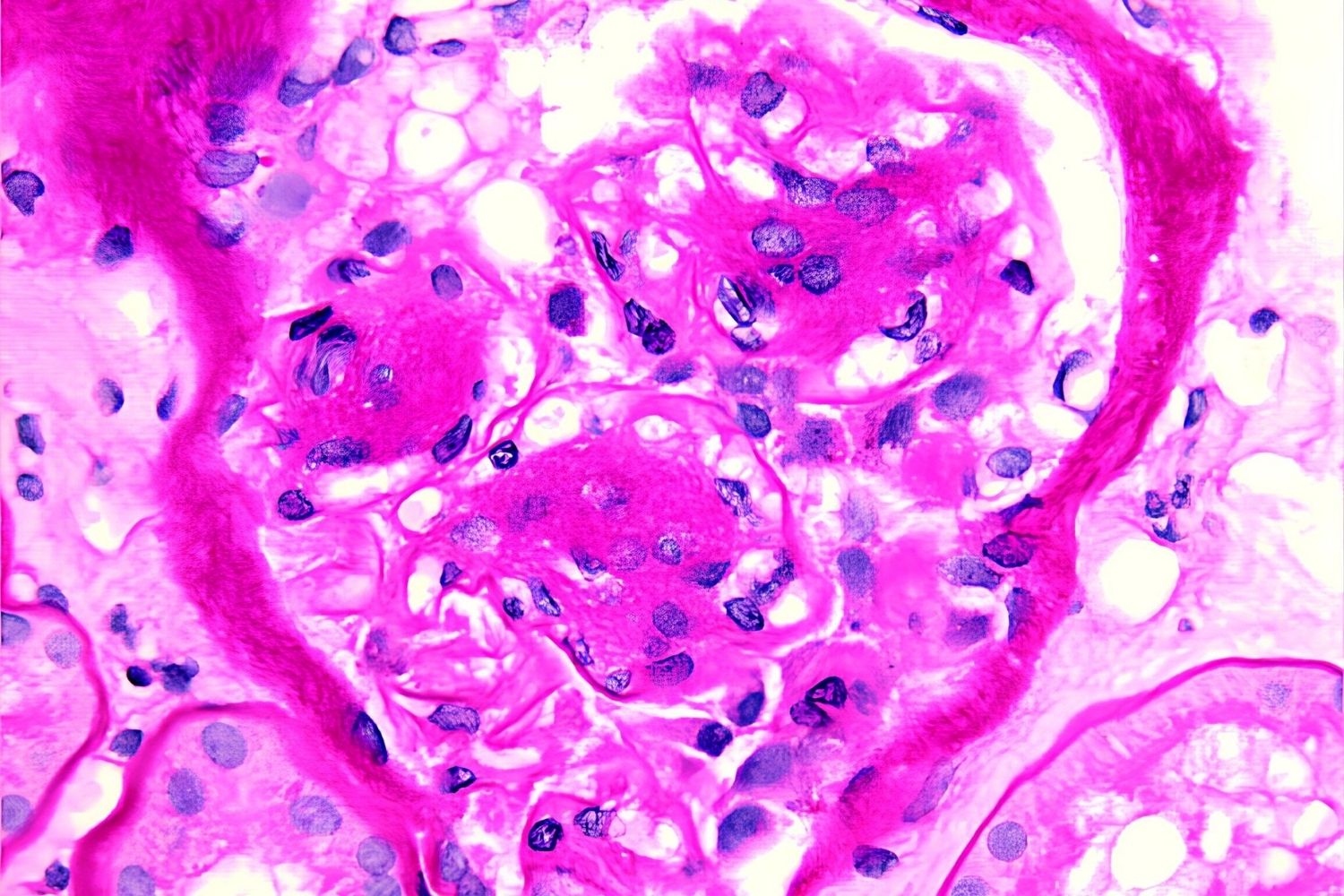
Kimmelstiel–Wilson Disease, also known as diabetic nephropathy, is a serious kidney condition often linked to diabetes. This disease damages the kidneys' filtering units, leading to protein leakage in urine and, eventually, kidney failure. Understanding Kimmelstiel–Wilson Disease is crucial for those managing diabetes, as early detection and treatment can slow its progression. Symptoms may include swelling in the legs, high blood pressure, and fatigue. Risk factors include poor blood sugar control, high blood pressure, and a long history of diabetes. Treatments focus on controlling blood sugar and blood pressure, along with medications to protect kidney function.
Key Takeaways:
- Kimmelstiel-Wilson Disease, linked to diabetes, can lead to kidney failure. Early recognition, blood sugar control, and healthy lifestyle are crucial for prevention and management.
- Lifestyle changes, regular check-ups, and medication adherence are key in preventing and managing Kimmelstiel-Wilson Disease, especially for those with diabetes.
What is Kimmelstiel-Wilson Disease?
Kimmelstiel-Wilson Disease, also known as diabetic nephropathy, is a serious kidney condition. It primarily affects people with diabetes. This disease can lead to kidney failure if not managed properly. Here are some intriguing facts about this condition.
-
Named After Discoverers: The disease is named after Drs. Paul Kimmelstiel and Clifford Wilson, who first described it in 1936.
-
Diabetes Link: It is a common complication of both Type 1 and Type 2 diabetes.
-
Glomerulosclerosis: The disease causes glomerulosclerosis, which is the hardening of the tiny blood vessels in the kidneys.
-
Proteinuria: One of the earliest signs is proteinuria, where protein leaks into the urine.
-
High Blood Pressure: High blood pressure often accompanies this condition, worsening kidney damage.
Symptoms and Diagnosis
Recognizing the symptoms early can help in managing the disease better. Diagnosis usually involves several tests to confirm the condition.
-
Swelling: Swelling in the legs, ankles, feet, and hands is a common symptom.
-
Fatigue: Patients often feel tired due to the kidneys' reduced ability to filter waste.
-
Frequent Urination: Increased urination, especially at night, is another symptom.
-
Blood Tests: Blood tests can reveal high levels of creatinine and urea, indicating kidney dysfunction.
-
Urine Tests: Urine tests can detect protein and other abnormalities.
Risk Factors
Certain factors increase the likelihood of developing Kimmelstiel-Wilson Disease. Understanding these can help in prevention and early intervention.
-
Duration of Diabetes: The longer a person has diabetes, the higher the risk.
-
Poor Blood Sugar Control: Uncontrolled blood sugar levels significantly increase the risk.
-
Genetics: Family history of kidney disease can be a contributing factor.
-
Smoking: Smoking can accelerate the progression of kidney damage.
-
Obesity: Being overweight is a significant risk factor.
Treatment and Management
Managing Kimmelstiel-Wilson Disease involves a combination of lifestyle changes and medical treatments. Here are some key aspects.
-
Blood Sugar Control: Keeping blood sugar levels in check is crucial.
-
Blood Pressure Management: Medications to control blood pressure can slow kidney damage.
-
Dietary Changes: A kidney-friendly diet low in salt and protein can help.
-
Medications: ACE inhibitors and ARBs are commonly prescribed to protect the kidneys.
-
Regular Monitoring: Regular check-ups and tests are essential to monitor kidney function.
Complications
If not managed properly, Kimmelstiel-Wilson Disease can lead to severe complications. Awareness of these can prompt timely medical intervention.
-
Chronic Kidney Disease: The disease can progress to chronic kidney disease (CKD).
-
End-Stage Renal Disease: In severe cases, it can lead to end-stage renal disease (ESRD), requiring dialysis or a kidney transplant.
-
Cardiovascular Problems: Patients are at higher risk for heart disease and stroke.
-
Infections: Reduced kidney function can make patients more susceptible to infections.
-
Anemia: Kidney damage can lead to anemia due to reduced production of erythropoietin.
Prevention Strategies
Preventing Kimmelstiel-Wilson Disease involves proactive measures, especially for those with diabetes. Here are some effective strategies.
-
Healthy Diet: Eating a balanced diet rich in fruits, vegetables, and whole grains can help.
-
Regular Exercise: Physical activity helps maintain a healthy weight and blood pressure.
-
Quit Smoking: Avoiding tobacco can reduce the risk of kidney damage.
-
Regular Check-Ups: Routine medical check-ups can detect early signs of kidney problems.
-
Medication Adherence: Taking prescribed medications as directed is vital for managing diabetes and preventing complications.
Final Thoughts on Kimmelstiel–Wilson Disease
Kimmelstiel–Wilson Disease, also known as diabetic nephropathy, is a serious condition affecting the kidneys of people with diabetes. Understanding its symptoms, causes, and treatment options can help manage the disease better. Regular check-ups, maintaining a healthy lifestyle, and following medical advice are crucial steps in preventing or slowing its progression.
Early detection can make a significant difference, so staying informed and proactive is key. If you or someone you know has diabetes, keeping an eye on kidney health is essential. Remember, knowledge is power, and being aware of the facts about Kimmelstiel–Wilson Disease can lead to better health outcomes. Stay vigilant, stay healthy, and always consult healthcare professionals for guidance.
Frequently Asked Questions
Was this page helpful?
Our commitment to delivering trustworthy and engaging content is at the heart of what we do. Each fact on our site is contributed by real users like you, bringing a wealth of diverse insights and information. To ensure the highest standards of accuracy and reliability, our dedicated editors meticulously review each submission. This process guarantees that the facts we share are not only fascinating but also credible. Trust in our commitment to quality and authenticity as you explore and learn with us.
